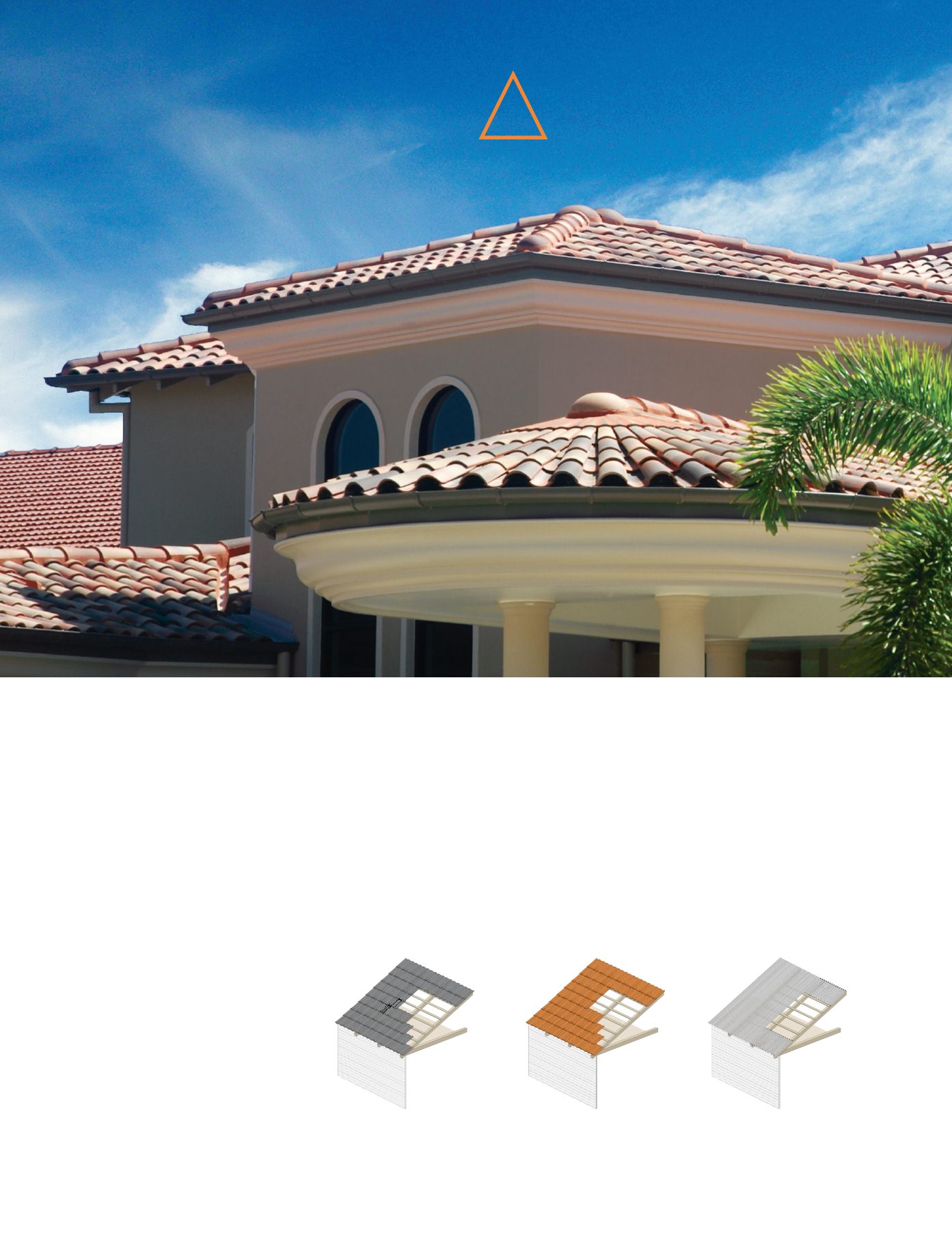
88
|
design
mag
Pe k
performance
The seemingly humble roof tile
takes its rightful place in the sun
There was a time when a roof was just a weatherproof
cap on a building. Now it has the added burden of
being an architectural element and an environmental
component as well as supporting solar panels, a
solar hot water service, skylights and ventilators.
That’s a lot for any roof to carry.
Concrete and terracotta tiles, two of Australia’s most
popular roofing materials, have been around forever, or
at least it seems that way. So what’s left to learn? Plenty
it seems, going by the level of scientific research, often
conducted by the roof tile industry, led in our country by
the Roofing Tile Association of Australia.
The amount of energy required to make and install a product,
including extraction of raw materials and even delivery to site, is
called its embodied energy. It is a handy measure of a product’s
environmental impact and one that is increasingly gaining
attention from designers, specifiers and consumers. Landmark
research conducted by Dr Bill Lawson, a recognised Australian
authority on building materials, showed that concrete and
terracotta roof tiles have lower embodied energy than sheet
metal roofing.
Once the longevity of tiles is factored in – Bristile concrete
roof tiles carry a 50 year warranty against manufacturing
defects, 20 years longer than sheet metal – the gap
between tiles and sheet metal roofing widens even further.
These examples are calculated on an average roof size
of 250 square metres; all assume a timber frame and
plasterboard ceiling.
Embodied energy – what’s top of the table?
Concrete roof tiles Terracotta roof tiles
Sheet metal roofing
251
MJ/m²
271
MJ/m²
330
MJ/m²
Source: Lawson, B, Building Materials, Energy and the Environment:Towards Ecologically Sustainable Development,
Royal Australian Institute of Architects, Canberra, 1996


